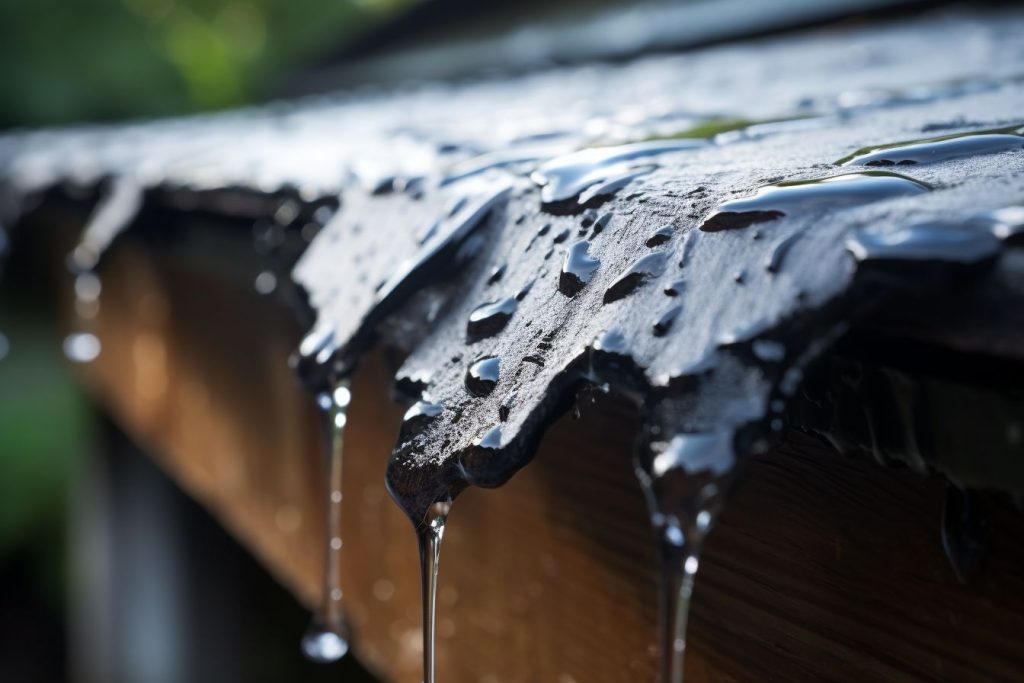Have you noticed moisture or water stains on your ceiling? These could be signs of a roof leak, a problem that can lead to severe damage if not promptly addressed. This article will guide you through understanding the detrimental effects of roof leaks on your home’s structure and how to manage them effectively.
Let’s dive into this crucial homeowner’s topic: a minor leak could become an enormous headache!
Key Takeaways
- Roof leaks can cause damage to ceilings, insulation, and the overall structure of a home.
- Leaky roofs create an environment for mould and mildew growth, which can lead to health issues.
- Addressing roof leaks is essential to prevent further damage and costly repairs.
- Ignoring or delaying fixing roof leaks can put the entire home at risk and lead to extensive structural problems.
Effects of Roof Leaks on Home Structure
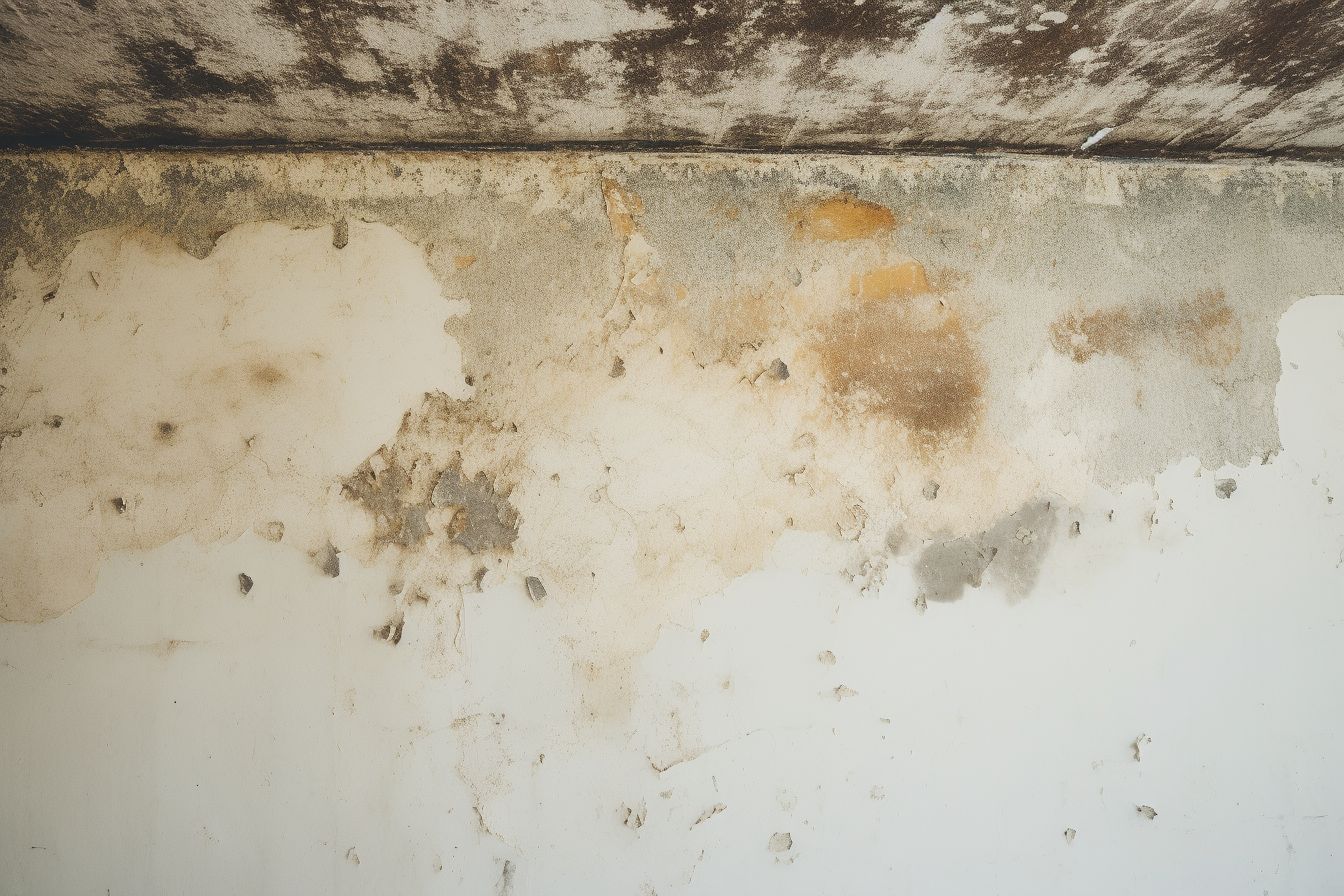
Roof leaks can lead to damaged ceilings and attics, insulation damage, structural damage, and the growth of mould and mildew.
Damaged Ceilings and Attics
Water from roof leaks seeps into your home’s ceilings and attics, causing significant damage over time. Staining and discolouration on the ceiling indicate the presence of a leaky roof.
Moreover, this moisture can gradually deteriorate structural elements in your attic. Your home’s overall structure and integrity are at risk when these areas sustain water damage.
Moisture trapped within such confined spaces encourages mould growth. This compromises the aesthetic appeal and creates potential health hazards for inhabitants. Attic insulation may become less effective as it absorbs water, leading to higher energy bills due to heat loss during winter or air conditioning escape during the summer.
Insulation Damage
Water seeping through a leaking roof can damage your home’s insulation. Over time, persistent moisture infiltration results in damp insulation, diminishing its thermal performance significantly.
This is particularly problematic if the leak impacts the attic, where much of a home’s heat loss typically occurs.
Insulation damage from a leaking roof doesn’t just affect your comfort—it also leads to increased energy consumption as your heating and cooling systems struggle to maintain temperature balance.
Dampened insulation promotes mould growth, further deteriorating the house’s structural elements. Inadequate insulation due to leaks could also lead to condensation buildup, exacerbating roofing issues and creating a never-ending cycle of damage.
Structural Damage
Roof leaks are most destructive when they worm into a home’s core structure. The excess water seeps into the wooden framing, causing it to warp and weaken over time. This type of moisture infiltration compromises the stability of your home and can lead to costly framing repairs.
Further havoc ensues as roof leaks extend beyond just the attic and ceilings. It may seem small initially, but if left unchecked, these leaks can channel water towards your house’s foundation.
Foundation repair becomes imminent as this influx of water damages its integrity, leading to structural instability that negatively impacts property value.
Mold and Mildew Growth
A leaky roof can create a breeding ground for mould and mildew in your home. When water seeps into your attic or walls, it creates the perfect conditions for fungal growth. The moisture from the roof leak allows mould to thrive, resulting in dampness and unpleasant odours throughout your house.
Mould and mildew are not only unsightly but also pose serious health risks. Breathing in their spores can trigger respiratory problems, allergies, and other health issues. If left untreated, mould and mildew can cause structural damage to your home over time as they feed on organic materials like wood and drywall.
It is crucial to address roof leaks promptly to prevent mould and mildew growth and protect your home’s structure and indoor air quality.
Potential Hazards and Risks
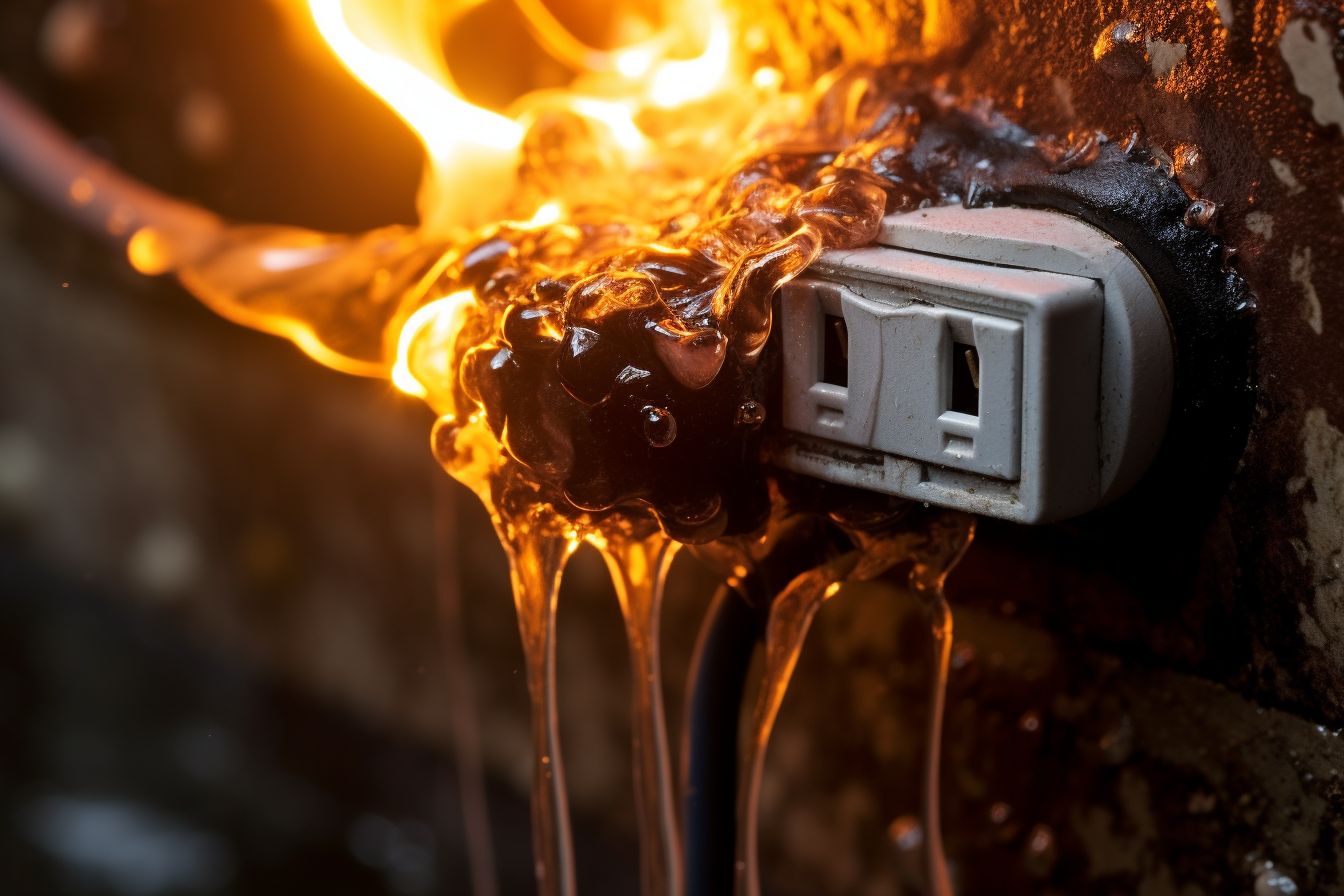
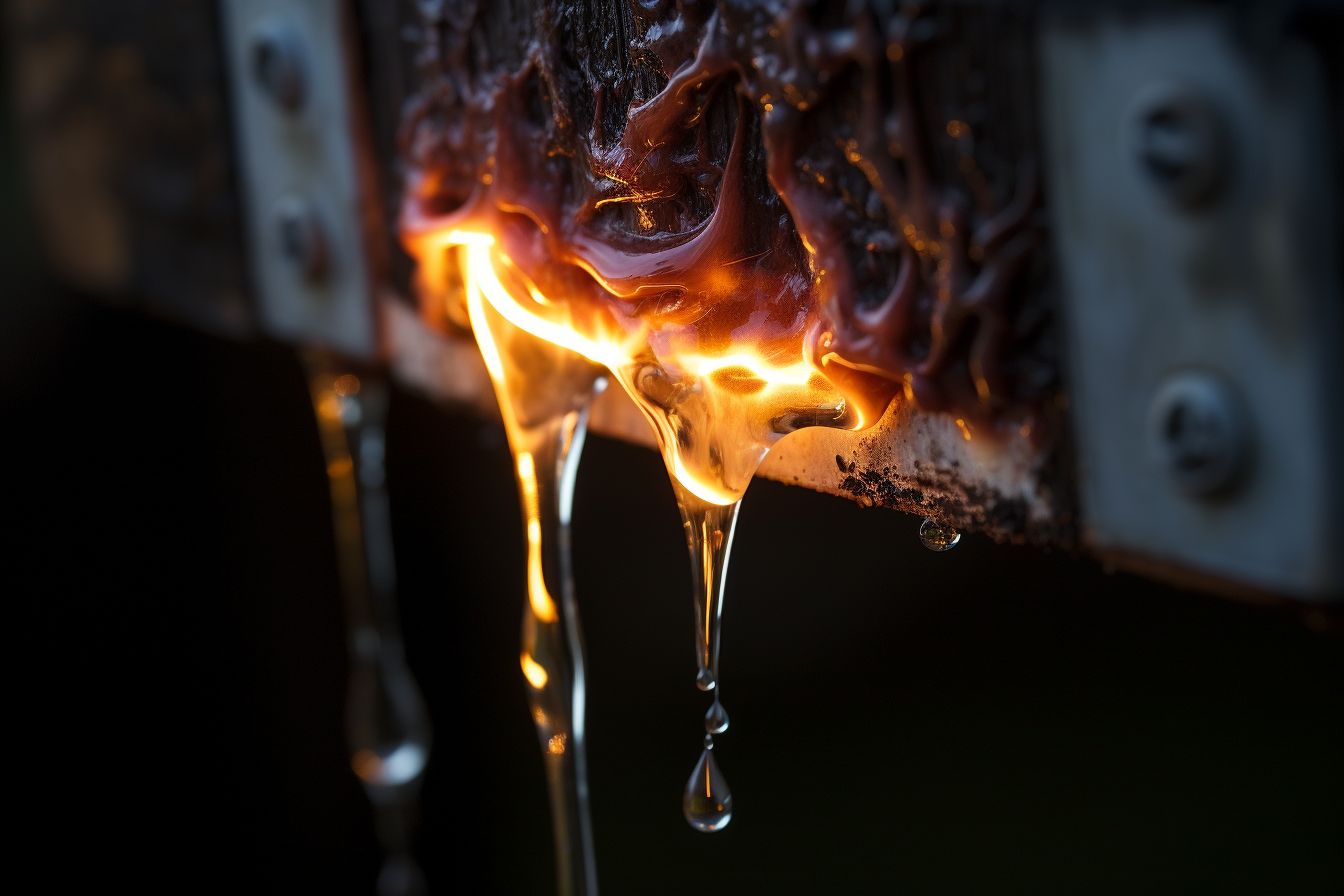
Roof leaks can pose various hazards and risks to your home, including fire hazards, slip hazards, and energy inefficiency. Don’t let these dangers go unnoticed – read on to learn more about how roof leaks can impact your home structure.
Fire Hazards
A leaky roof can pose a severe fire hazard in your home. If water seeps into the walls or ceilings, it can come into contact with electrical wiring, increasing the risk of an electrical fire.
This is especially dangerous if leaks near light fixtures, as water can interfere with electrical connections and potentially ignite a fire. It’s essential to promptly fix any roof leaks to avoid these potential fire hazards and ensure the safety of your home and family.
Regular roof maintenance and inspections can help identify and address issues before they become more significant risks. Protect your home by addressing roof leaks promptly and preventing fire dangers.
Leaky roofs also increase the risk of water damage that could affect electrical systems in your home, leading to possible fires caused by faulty wiring or short circuits. Water conducts electricity, so if moisture infiltrates areas where wires are present, it significantly increases the chances of an electrical accident in your house.
For this reason alone, it is crucial to handle roof leaks without delay and repair any compromised areas immediately to reduce the risk of fire-related incidents due to faulty electrical connections or damaged wiring caused by prolonged exposure to water.
Slip Hazards
Roof leaks can create slip hazards in your home. When water from a leaky roof seeps onto the floor, it makes the surface slippery and dangerous. This increases the risk of accidents and falls, especially for children and older people.
Slip hazards caused by roof leaks can lead to sprains, fractures, and head injuries. It’s essential to address these hazards promptly to prevent further harm. By causing slip hazards and other damages, roof leaks can also result in personal property loss and increased energy costs.
Regular maintenance is crucial to ensure safety and minimise risks associated with slip hazards caused by roof leaks.
Energy Inefficiency
A leaky roof doesn’t just lead to structural damage; it can also result in energy inefficiency. When a roof leaks, the home’s insulation becomes compromised, causing heat or cool air to escape more easily.
Your HVAC system must work harder to maintain a comfortable temperature, leading to increased energy consumption and higher utility bills. Cool roofs are explicitly designed to reflect sunlight and absorb less solar energy, helping to reduce this energy waste associated with roof leaks.
By fixing roof leaks promptly and ensuring proper insulation, homeowners can improve their overall energy efficiency and save money on energy costs in the long run.
Homeowner’s Manual: Handling Roof Leaks

Roof leaks can cause significant damage to a home’s interior. Homeowners need to know how to handle these leaks effectively. Here are some steps to follow when dealing with roof leaks:
- Identify the source of the leak: Check the attic and ceilings for signs of water damage, such as stains or dampness. Use a flashlight to inspect the roof for missing shingles, cracked flashing, or other visible signs of damage.
- Temporary fixes: While waiting for professional help, you can use tarps or buckets to catch the leaking water and prevent further damage. Please place them in a safe spot where they won’t cause any tripping hazards.
- Call a professional: Contact a reputable roofing contractor specialising in repairing roof leaks. They have the knowledge and expertise to fix the problem correctly and prevent future leaks.
- Document the damage: Take pictures of the affected areas before and after repairs. This documentation will be helpful when filing an insurance claim.
Importance of Promptly Fixing Roof Leaks
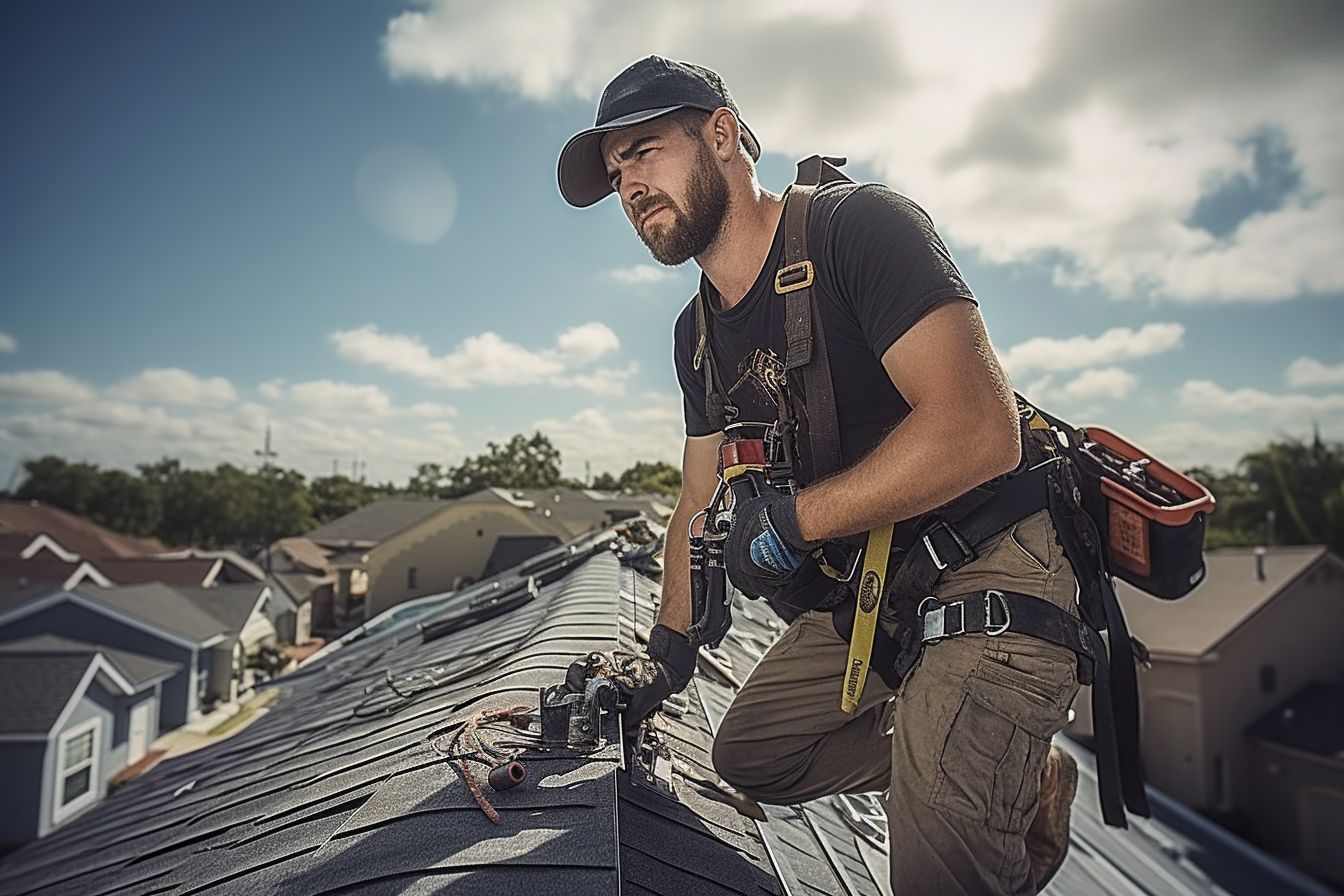
Timely roof leak repair is crucial for preserving the structural integrity of your home. Ignoring or delaying fixing roof leaks can lead to various issues that can harm the overall structure of your house.
Excess moisture from these leaks can cause warping in the framing, putting the entire home at risk. Additionally, roof leaks create an ideal environment for mould growth, which damages walls and flooring and poses health concerns for you and your family.
Even small leaks should be addressed as they can escalate into more significant problems and cause extensive damage to your home. By promptly addressing roof leaks, you can prevent further damage, protect your home’s structure, and ensure a safe living environment for everyone inside.
Conclusion
Roof leaks have a significant impact on the structure of a home. They can damage ceilings and insulation and even cause structural damage. Mold growth is also a common consequence of roof leaks.
It’s crucial to address these issues quickly to maintain the integrity of your home’s structure.
FAQs
1. Can a roof leak cause damage to the home’s structure?
Yes, a roof leak can cause significant damage to the home’s structure by weakening the walls, ceilings, and supporting beams, as well as promoting mould growth.
2. What are the signs of structural damage from a roof leak?
Signs of structural damage from a roof leak include sagging or cracking ceilings, water stains on walls or floors, warped or rotting wood surfaces, and visible mould or mildew growth.
3. How quickly should I address a roof leak to prevent further structural damage?
Addressing a roof leak immediately is essential to prevent further structural damage. The longer it goes untreated, the more extensive and costly the repairs may become.
4. Can fixing a roof leak prevent future structural problems?
Fixing a roof leak promptly can help prevent future structural problems by stopping additional moisture from entering your home and causing further deterioration of its components.
5. Should I hire a professional to repair structural damages caused by a roof leak?
Yes, hiring a professional contractor with experience in addressing water damage and repairing structures affected by roof leaks is recommended. They have the expertise and proper tools to ensure effective repairs are done safely and correctly.

